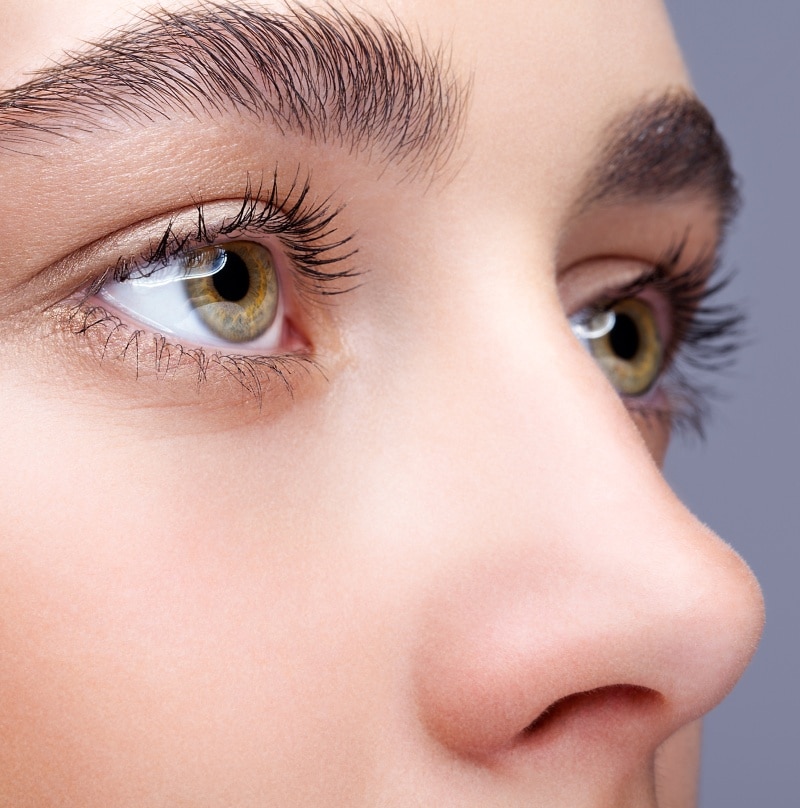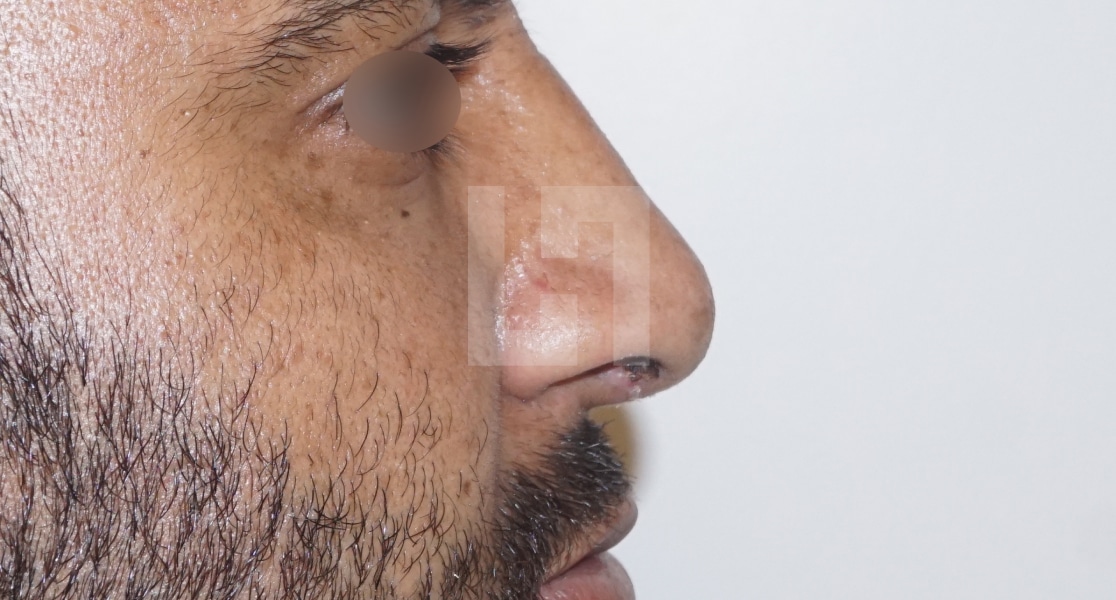Rhinoplasty is the art of making a prominent, deformed, or unattractive nose more aesthetic permanently.
Rhinoplasty in Dubai
Rhinoplasty is one of the most requested procedures in cosmetic surgery, whether for aesthetic reasons or to improve breathing. This procedure must be performed by a surgeon specialized in rhinoplasty. Dr. Lyor HANAN is a rhinoplasty surgeon in dubai. He particularly focuses on achieving a natural result, in harmony with the rest of the patient’s face, so that it is not blatantly obvious that surgery has been performed.
For patients searching for the best surgeon in Dubai for rhinoplasty, Dr. Lyor Hanan specializes in natural, balanced nose reshaping using advanced open and closed rhinoplasty techniques. Whether refining the nasal tip, correcting asymmetry, or improving breathing function, Dr. Hanan delivers personalized rhinoplasty results that enhance facial harmony while maintaining ethnic identity.

What is Rhinoplasty?
Aesthetic Rhinoplasty
Aesthetic rhinoplasty involves changing the external appearance of the nose, such as a hump, a too-large nose, or a drooping tip. This change is permanent.
Nasal Tip Rhinoplasty
When the nose is generally harmonious but the tip is too large, drooping, or deformed, nasal tip rhinoplasty is indicated. It improves the appearance of the nose tip by reshaping the cartilages without touching the nose bones, making the recovery simpler than a traditional rhinoplasty.
Septoplasty
Septoplasty is the surgery of a deviated septum. It straightens a septum that, due to its deviation, causes breathing difficulties.
Secondary Rhinoplasty
Secondary rhinoplasty corrects defects that appeared after the first rhinoplasty. This often challenging procedure must be performed by an expert rhinoplasty surgeon.
Preservation Rhinoplasty
Preservation rhinoplasty is an innovative technique that involves removing the nasal hump from “underneath” to preserve the natural traits of your nose, rather than from above (when the hump is cut in the traditional way). This makes your nose smaller, ensuring a natural result without radically changing your appearance.
Is Rhinoplasty Right for You?
Good candidates for rhinoplasty are patients:
- In good health without serious illnesses;
- Non-smokers or those who have quit smoking for more than a month;
- With realistic expectations in terms of results;
- Who have completed their puberty.
Dr. Lyor HANAN, after a thorough examination of your nose from both an aesthetic and breathing perspective, will guide you on the possibilities of improving certain aspects of your nose through rhinoplasty.
Recommendations Before Rhinoplasty
Before a rhinoplasty, you must:
- Perform routine blood tests to ensure there is no anemia or blood clotting problem;
- Stop smoking 3 weeks before the surgery;
- Avoid taking aspirin, anti-inflammatories, or other blood-thinning medications;
- Schedule an appointment with an anesthesiologist at least 48 hours before the surgery.
Procedure with Dr. Lyor HANAN
The procedure takes place in the operating room of a private surgical clinic.
The first step involves general or local anesthesia with sedation. Most of the time, Dr. Lyor HANAN will opt for general anesthesia to enhance your comfort during the procedure.
The second step is the incision. Dr. Lyor HANAN uses both closed rhinoplasty techniques with an incision hidden inside the nose and open rhinoplasty techniques with a discreet incision at the columella (the strip of skin separating the nostrils). Through this incision, the nasal skin is gently lifted to remodel the cartilage and bone.
The third step is nose reshaping. In a reduction rhinoplasty, the nose size is reduced by filing down excess bone and removing excess cartilage, while in an augmentation rhinoplasty, cartilage is added, usually taken from the lower part of the septum without affecting breathing.
The fourth step is septoplasty. Dr. Lyor HANAN systematically corrects a deviated septum (if present) during a rhinoplasty to improve breathing.
The fifth step is closing the incisions. This is done with resorbable sutures that disappear within a few days to weeks.
What are the Complications of Rhinoplasty?
Complications of rhinoplasty are very rare but can occur:
- Complications related to general anesthesia (nausea, vomiting, etc.);
- Reduced skin sensation on the nose;
- Reduced nasal breathing;
- Infection;
- Poor healing;
- Possibility of secondary surgery (touch-up);
- Poor or insufficient aesthetic result.
Postoperative Course of Rhinoplasty
You can breathe directly after the procedure; Dr. Lyor HANAN does not use nasal packing.
There are bruises and swelling around the eyes for 7 days.
Postoperative swelling is most significant during the first 3 days and then decreases from the 5th day.
There is little to no pain, and any discomfort is relieved with paracetamol.
The patient may feel slight respiratory discomfort in the first few days.
There may be minor bleeding that subsides in a few days.
You can resume work after a few days.
When an open approach is used, the sutures are resorbable and disappear on their own within 7-10 days.
The scar fades quickly within a few weeks and is invisible after 3 months.
What are the Postoperative Care Instructions for Rhinoplasty?
On the first postoperative day: Keep your head elevated (45° or two pillows). Apply cold (ice packs) for the first 24 hours.
Take antibiotics and painkillers as prescribed by Dr. Lyor HANAN.
On the second postoperative day: Perform nasal washes with saline to remove blood clots that may have formed and apply a special oil (gomenol oil) morning and evening at the nostril entrance and on the scar to prevent crust formation. These care instructions continue until the follow-up visit on day 7-10.
Day 7-10: Dr. Lyor HANAN will remove the plastic splint protecting the nose.
You can resume your moisturizing routine, makeup, and showering.
When can I start blowing my nose again?: Gently from two weeks post-surgery.
When can I drive my car?: As soon as the swelling does not impair vision and you are no longer taking medication that can cause drowsiness.
When can I resume physical activity after rhinoplasty?: Avoid bending your head down for two weeks after the procedure. Normal sports activities can be resumed after 1 month.
When can I go back to the pool after rhinoplasty?: Swimming with head immersion is allowed two months after surgery.
When can I expose myself to the sun after rhinoplasty? You can be in the sun, but not for prolonged periods. Use a hat to avoid exposing your nose to the sun.
What to do in case of an unpleasant odor after rhinoplasty?: This can happen to some patients and will disappear on its own within a few weeks.
Is it normal to feel numbness in my lip after rhinoplasty?: Yes, this is a normal postoperative phenomenon that disappears in 2-3 months.
Is it normal to feel the tip of my nose hard after rhinoplasty?: Yes, this is due to postoperative swelling and will disappear in 3 to 6 months.
Can I travel by plane after rhinoplasty?: Yes, 7 days after the procedure.
Expected Results of Rhinoplasty
The results of rhinoplasty are lifelong. The final result can take up to a year to become fully apparent. When the splint is removed, you will already see a large part of the result. At 1 month post-surgery, three-quarters of the final result may already be visible. At 3 months, 90% of the result will be visible. The nasal tip is the part of the nose that takes the longest to refine completely.
Regular postoperative follow-up at 1 week, 1 month, 3 months, 6 months, and 1 year is extremely important to your surgeon. It allows them to take photos of your nose at different stages and thus better evaluate the result.
If you are not satisfied with the result, a touch-up will be offered by Dr. Lyor HANAN after discussing the benefits and risks of this touch-up in consultation.

















What are the Criteria for Social Security Coverage of Rhinoplasty?
Social security coverage for rhinoplasty is possible in three cases:
A prior agreement request must be made to social security,